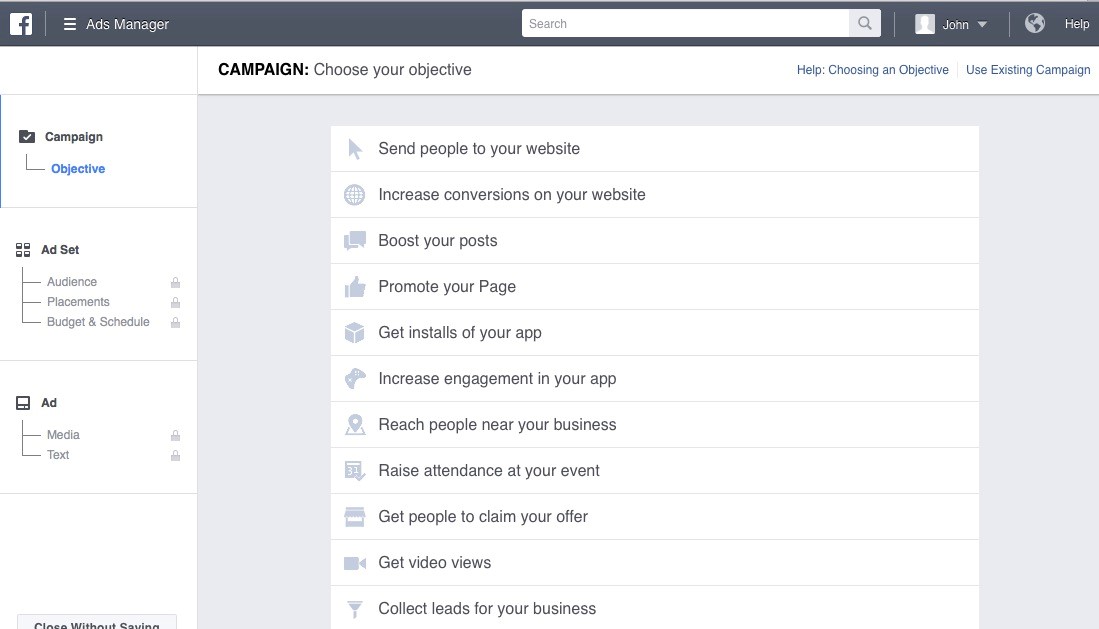Why is social media advertising different? What are the best practices?
The big difference between social media and other online advertising is sharing. Users’ love of divulging details about their personal and business lives sets it apart from email marketing and traditional display advertising. And leveraging what people share about themselves on social media can be very profitable.
In short, social media advertising helps you find new customers by using users’ own shared information to identify interest. Its tools let you target the right people before they even begin their online search for products or services – giving you advanced options for targeting and conversion tracking, plus the reach offered by social media’s presence on mobile devices.
Three key reasons for making social media part of your advertising strategy:
1. Targeting
Facebook, LinkedIn and Twitter enable you to target your advertising to potential customers using a remarkable level of demographic and psychographic data. From sign-up processes to users’ interactions on social networks, user-provided data gives you precise coordinates for targeting consumers and businesses.
Target what they do, not just who they are.
Social media is also about a users’ interaction with his or her community. This dynamic allows you to better understand who they are and what their trigger points might be – giving you powerful leverage when it comes to arousing interest in your brand or product.
The perfect application of one-to-one marketing science.
Based on the model of one-to-one peer relationships, social media platforms provide you the ultimate in opt-in advertising. You can target users with goods and services matching the needs and preferences they’ve shared. Even better, your ad campaigns can reflect sensitivity to users’ opt-out choices.
2. Reach
Social media is the most popular online activity and offers the potential to vastly extend the reach of your advertising. Three out of five Web requests go through social media, meaning 60% percent of all web traffic is social media based.
Perfect for the big swing to mobile advertising.
Marketing via smartphones is the single biggest wave in digital media advertising. It’s also a perfect native option, since mobile users check Facebook, Twitter and LinkedIn multiple times a day.

Mobile ads claim the lion’s share of time spent on social media.
3. Cost Effectiveness
The targeting and tracking tools available can help you achieve very low Cost Per Acquisition (CPA) – the cost of actually obtaining a new customer. This means your pricing in terms of Cost Per Conversion, Cost Per Click and Cost Per Thousand Placement can be much more affordable if a lower CPA is factored into their costs.
Next up, 10 Best Practices. But first there’s one big thing to avoid:
Inappropriate Messaging
If your messaging is off, users will opt out of your ads, lowering your display ranking and hurting future campaigns. Worse, offend one user, and they’ll tell the whole community – killing your campaign and damaging your brand. And be aware that some communities are sensitive to what advertisers know about them. Ads that they feel violate their privacy will a raise red flag with your name on it.
10 Best practices across all platforms.
1. Set Goals and Metrics
First, define your campaign’s goal and then the action you want people to take in support of it. Are you looking for direct sales or leads? Do you want signups for your newsletter, or requests for a free sample? Think it through. Then decide the action most likely to support your goal.

Make use of the guidance provided by social media platforms for optimizing your ads to accomplish specific goals.
Metrics: Decide the level of response required to judge your campaign’s success. For example, if you’re going to tie revenue to workshop attendance, decide the dollar value of each signup and the total number of signups needed to be profitable. Also assign metrics to actions that have no near term monetary value, like website visits. Put a percentage on the boost in website traffic you want.
2. Create Lifetime and Daily Budgets
A Lifetime Budget lets you select an amount to spend over the entire span of a campaign. Once set, you can’t go over budget. If you forget, you can end up in a deep hole very fast as your ads cycle and recycle. A Daily Budget controls your spend per day. You stipulate how much you will spend on a daily basis and your ads will cease showing once you hit your daily budget cap.
3. Do Your Research
Regardless of what seems to be the best platform for your campaign, take the time to explore the relationships between the demographic and psychographic patterns of your audience. Don’t just assume Facebook is better for B2C or LinkedIn for B2B.
Example: If you are advertising shared business plane leases, research shows that people who are interested in private flight also tend to be interested in performance cars. So advertising to Facebook users who are into sports cars may be worth considering – instead of solely focusing on LinkedIn lists.

|

|
4. Be Consistent
Be sure that your social media campaigns align with your other advertising initiatives. Don’t bring up question marks in people’s minds by making your ads inconsistent with what you’re using for paid search, display advertising, billboards, etc.
5. Pop!
Social media advertising is much different from paid search – where people are actively looking for a solution like yours. So do whatever you can to give your ads some bite, some pop.
6. Align Targeting Options to Objectives
A big benefit of social media advertising comes from the wide range of targeting options the platforms can support. But be sure you’re matching your available targeting options with your advertising objectives.
7. Test and Retest
Constantly swap out ad versions showing different treatments of the same content. Use the better-performing versions to keep adding refinements and test them over the course of your campaign. It’s an ongoing cycle where you continually apply the lessons learned.
8. Schedule To Your Advantage
Schedule ads to match users’ schedules. Look at your target audience, what you’re promoting, and determine the times they’re likely to be on social media. Consider week-part targeting, too – that is, running your ads on particular weekdays, over weekends, etc.
9. Automate
Whenever you can, use your platform to automatically make optimization decisions based on ad performance. For instance, in Facebook you can set up a campaign stating a daily budget of $150 and it will automatically bid for you on either an impression or per-click basis to garner as many clicks as possible for your $150.
10. Repeat!
Gather data and set regular meetings to analyze results, go over the metrics, plan changes and decide how to implement them as your campaign moves forward. Repeat over and over to ensure the best bang for your social advertising buck.

John Thyfault
This post was authored by John Thyfault, Vice President of Search & Social Strategy, and Laurie B. Beasley, President of Beasley Direct & Online Marketing.

Laurie B. Beasley




I like the point 7. Test and Retest
I recently suggested one of my client to start FB advertisement from zero and encouraged him to collect data first. You have to test which one is working and which type of ad sets don’t work on FB.
Good read, beasleydirect.
Thanks.